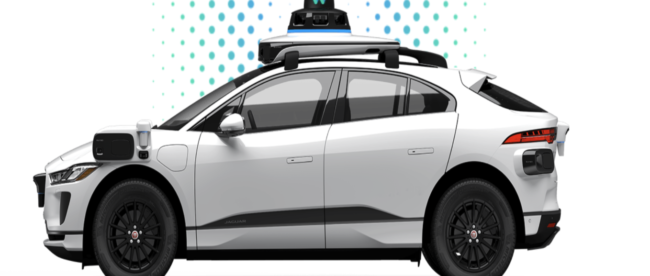Advocates for People with Disabilities Want Expansion of Autonomous (Self Driving) Taxi Services
San Francisco’s LightHouse for the Blind and Visually Impaired, along with other community organizations, are urging state regulators to approve Waymo’s permit for its 24/7 self-driving car service. These organizations argue that autonomous vehicles are safer and provide more accessibility and independence for people with disabilities than traditional ride-hailing services. They hope that the permit will encourage expanded services.
In an open letter, these groups urged the California Public Utilities Commission (CPUC) to approve Waymo’s permit as soon as possible, arguing that driverless cars can make transportation more inclusive. Other groups supporting this include the San Francisco LGBT Center, Self-Help for the Elderly, and the Epilepsy Foundation of Northern California.
However, San Francisco officials have raised concerns about driverless vehicles disrupting traffic and interfering with bus routes and emergency scenes. As a result, the CPUC has delayed its decision on the permit.
Waymo and its competitor Cruise are both seeking to expand their paid passenger services in San Francisco, pending approval from the CPUC. The San Francisco Municipal Transportation Agency (SFMTA) reported 85 incidents involving Waymo and 261 involving Cruise between April 2022 and April 2023.
Despite these concerns, advocates for autonomous vehicles, like Sharon Giovinazzo, LightHouse’s CEO, believe that the long-term benefits of autonomous driving outweigh the negatives. She argues that robotaxis have the potential to transform lives and provide opportunities for those who have been excluded. However, she also notes that there is still room for improvement, such as providing more wheelchair-accessible vehicles.
The CPUC has confirmed that the Cruise and Waymo resolutions are on its Aug. 10 voting meeting agenda.
What Are Autonomous Vehicles?
Autonomous vehicles, also known as self-driving cars or driverless cars, are vehicles equipped with advanced sensors, cameras, and artificial intelligence (AI) technology that allow them to navigate and operate without human intervention. These vehicles can perceive their surroundings, interpret the data collected from sensors, and make real-time decisions to control their movement and behavior on the roads.
The main goal of autonomous vehicles is to safely and efficiently transport passengers or goods without the need for a human driver. They can handle tasks such as acceleration, braking, steering, and responding to traffic signals and road conditions autonomously. The AI algorithms in these vehicles use data from sensors and pre-programmed maps to identify and avoid obstacles, follow traffic rules, and plan optimal routes.
Autonomous vehicles have the potential to revolutionize transportation by reducing accidents caused by human error, improving traffic flow, and providing greater accessibility for people with disabilities or those who cannot drive. However, the technology still faces challenges, and further advancements are needed to ensure their widespread adoption and integration into existing transportation systems.
Waymo Is Google’s Self Driving Car Project
The Google Self-Driving Car Project, now known as Waymo, is an initiative by Google that involves developing technology for autonomous cars, primarily electric cars. This self driving initiative was started by Google way back in 2009.
The project is part of Google’s broader vision to create technology that can help drive cars safely, reduce accidents, and make transportation more efficient and accessible. The autonomous vehicles developed by Google use a combination of techniques such as machine learning, advanced sensors, and detailed map systems to navigate the roads safely.
Google’s self-driving cars have been tested extensively in various locations and under different driving conditions to ensure their safety and reliability. Currently, it serves robotaxi services in San Francisco, CA, Los Angeles, CA and Phoenix, AZ.
Other Autonomous Projects
Curious about what other autonomous projects there are? Check out the links below to learn more.
- World’s First Long-term Autonomous Driving Service North of the Arctic Circle: This project supports Bodø’s residents by providing a crucial public transport link.
- DFW Airport, surrounding cities test drive autonomous vehicles: In the first round of projects, Fort Worth tested an autonomous vehicle truck port. Dallas, Richardson, and McKinney also had projects.
- Autonomous Mobility – Transdev United States: Transdev is developing and deploying AV solutions to help solve mobility challenges for cities, towns, and communities in North America and around the world.
- 5 Cities With Noteworthy Autonomous Vehicle Pilot Programs: Autonomous Vehicle programs have spread throughout the world, with pilot projects taking place in over 47 cities globally.
Source: AXIOS
This blog was written mostly using chatGPT, a potential tool for increased accessibility. Do you think this is an appropriate use of chatGPT? Why or why not? Let me know!


Leave a comment